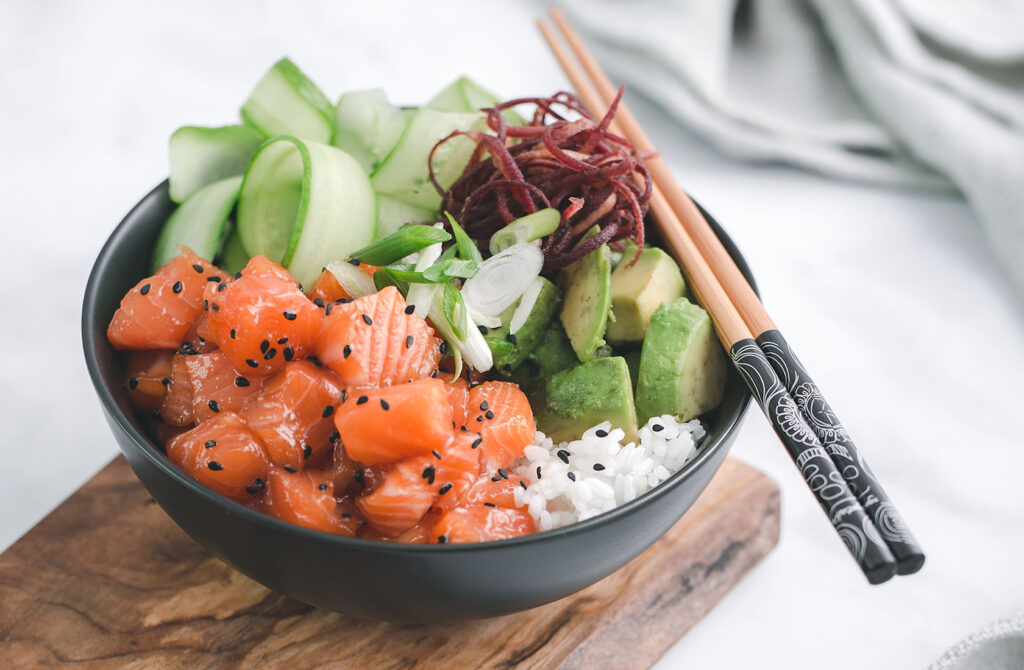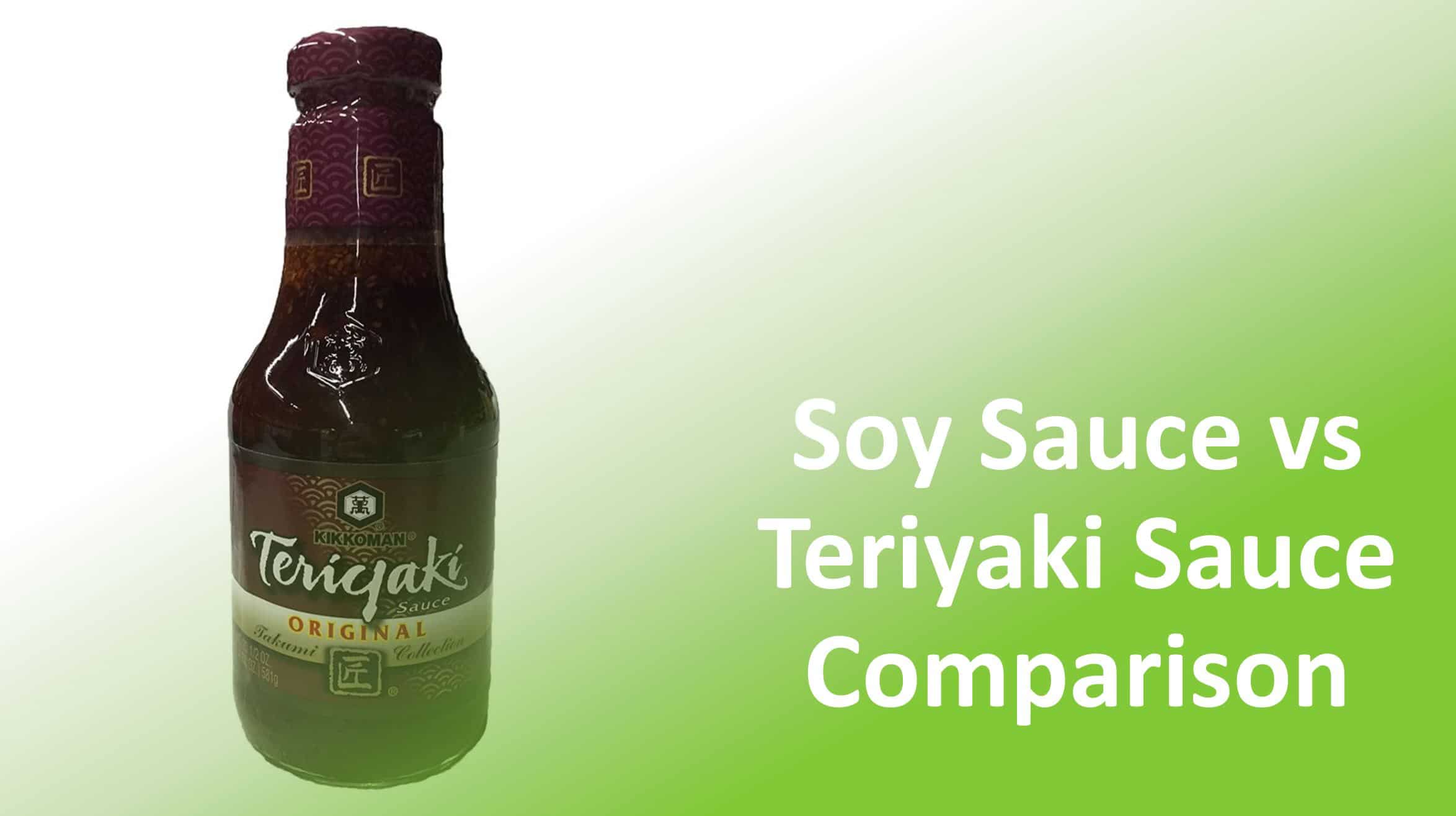Origins and History

Both poke sauce and teriyaki sauce have long and fascinating histories, evolving from humble beginnings to become beloved culinary staples worldwide. These sauces offer distinct flavors and textures, adding depth and complexity to a variety of dishes.
Origins and Traditional Uses of Poke Sauce
Poke sauce, a vibrant and tangy condiment, originates from the Hawaiian Islands. Its roots lie in the traditional Polynesian practice of marinating raw fish in salt and lime juice. This method, known as “ika” or “poke,” was a way to preserve fish and enhance its flavor.
The modern version of poke sauce typically includes ingredients like soy sauce, sesame oil, green onions, and chili flakes, reflecting the influences of Japanese and Chinese cuisines.
Origins and Traditional Uses of Teriyaki Sauce
Teriyaki sauce, with its rich, savory, and slightly sweet flavor, traces its origins back to Japan. The word “teriyaki” combines the Japanese words “teri” (meaning “glossy”) and “yaki” (meaning “grilled”). This name aptly describes the traditional method of preparing teriyaki dishes, where ingredients like fish or chicken are glazed with a sweet and savory sauce and then grilled over charcoal.
The original teriyaki sauce was a simple blend of soy sauce, sake, and mirin (sweet rice wine), but over time, it has evolved to include ingredients like ginger, garlic, and sugar.
Evolution and Global Spread of Poke Sauce
The popularity of poke sauce has skyrocketed in recent years, driven by the growing global interest in Hawaiian cuisine. The versatility of poke sauce has contributed to its widespread adoption, as it can be used to marinate, glaze, or top a variety of dishes, from sushi and salads to tacos and bowls.
The evolution of poke sauce reflects the fusion of culinary traditions, as chefs and home cooks have experimented with different ingredients and flavor profiles.
Evolution and Global Spread of Teriyaki Sauce
Teriyaki sauce has undergone a similar journey of evolution and global expansion. Its popularity has spread beyond Japan, becoming a beloved sauce in many parts of the world. The versatility of teriyaki sauce, which can be used to marinate, glaze, or even as a dipping sauce, has contributed to its widespread appeal.
Modern variations of teriyaki sauce often incorporate ingredients like honey, pineapple juice, or other fruits, reflecting the influences of different culinary cultures.
Ingredients and Flavor Profiles
Both poke sauce and teriyaki sauce are beloved for their unique flavor profiles, which stem from their distinct ingredients. Understanding these ingredients helps us appreciate the nuances of each sauce and how they complement different dishes.
Key Ingredients and Their Roles
- Poke Sauce:The base of poke sauce is typically a combination of soy sauce, sesame oil, and rice vinegar. These ingredients provide a salty, nutty, and tangy foundation.
- Teriyaki Sauce:Teriyaki sauce relies on a blend of soy sauce, mirin (sweet rice wine), and sugar, which create a savory, sweet, and slightly sticky profile.
Comparing and Contrasting Flavor Profiles
The flavor profiles of poke sauce and teriyaki sauce differ significantly, largely due to the presence or absence of certain ingredients.
- Poke Sauce:Poke sauce emphasizes a balance of salty, tangy, and nutty flavors. The sesame oil adds a distinct aroma and richness, while the rice vinegar provides a refreshing acidity. The absence of sugar keeps the sauce savory and allows the natural flavors of the ingredients to shine.
- Teriyaki Sauce:Teriyaki sauce leans heavily on sweet and savory notes. The sugar contributes a pronounced sweetness, while the mirin adds a subtle depth and complexity. The combination of soy sauce and sugar creates a caramelized flavor that coats the food.
Ingredients’ Contribution to Distinct Tastes
The specific ingredients used in each sauce contribute significantly to their unique flavor profiles.
- Poke Sauce:The absence of sugar in poke sauce allows the natural flavors of the ingredients to shine through. The combination of soy sauce, sesame oil, and rice vinegar creates a balanced and refreshing taste that complements the fresh ingredients in poke bowls.
- Teriyaki Sauce:The presence of sugar in teriyaki sauce adds a sweet and caramelized element to the flavor profile. This sweetness is balanced by the savory notes of soy sauce and mirin, creating a rich and complex taste that pairs well with grilled meats and vegetables.
Culinary Applications

Both poke sauce and teriyaki sauce have distinct culinary applications, reflecting their origins and flavor profiles. While poke sauce is primarily associated with Hawaiian cuisine, teriyaki sauce finds its roots in Japanese culinary traditions. However, both sauces have transcended their origins and found their way into diverse culinary landscapes.
Traditional Dishes
The traditional dishes where these sauces are used showcase their unique characteristics and cultural significance.
Poke Sauce
Poke sauce is a staple in Hawaiian cuisine, primarily used in the preparation of poke, a raw fish salad. Poke is typically made with diced raw fish, such as tuna, salmon, or mahi-mahi, marinated in poke sauce and often accompanied by other ingredients like onions, seaweed, and sesame seeds.
Teriyaki Sauce
Teriyaki sauce is a cornerstone of Japanese cuisine, widely used in teriyaki dishes, which involve grilling or pan-frying meat, fish, or vegetables glazed with teriyaki sauce. Teriyaki chicken, teriyaki salmon, and teriyaki tofu are some popular examples.
Modern Applications
The versatility of poke sauce and teriyaki sauce has led to their adoption in various cuisines beyond their traditional settings.
Poke Sauce
Modern applications of poke sauce extend beyond its traditional use in poke. It has found its way into other seafood dishes, such as sushi rolls, ceviche, and sashimi. Poke sauce is also used in salads, sandwiches, and even as a marinade for grilled chicken or tofu.
Teriyaki Sauce
Teriyaki sauce has gained popularity in international cuisine, particularly in Western countries. It is used in stir-fries, noodles, and rice dishes. Teriyaki sauce can also be incorporated into glazes for meats, poultry, and vegetables.
Recipes
The versatility of poke sauce and teriyaki sauce lends itself to a wide range of recipes, showcasing their diverse applications.
Poke Sauce
- Classic Hawaiian Poke:Combine diced raw tuna, chopped onions, green onions, and sesame seeds. Marinate with poke sauce and serve over rice.
- Spicy Salmon Poke Bowl:Combine diced salmon, avocado, cucumber, and edamame. Toss with poke sauce and sriracha for a spicy kick. Serve over quinoa or brown rice.
- Grilled Chicken with Poke Sauce Glaze:Marinate chicken breasts in poke sauce. Grill until cooked through and baste with additional poke sauce for a flavorful glaze.
Teriyaki Sauce
- Teriyaki Chicken Stir-fry:Stir-fry chicken with bell peppers, onions, and broccoli. Toss with teriyaki sauce and serve over rice noodles.
- Teriyaki Salmon with Glazed Vegetables:Marinate salmon fillets in teriyaki sauce. Grill or bake until cooked through. Serve with roasted vegetables glazed with teriyaki sauce.
- Teriyaki Tofu Bowls:Marinate tofu cubes in teriyaki sauce. Pan-fry until golden brown. Serve over brown rice with roasted vegetables and a sprinkle of sesame seeds.
Nutritional Considerations

While both poke sauce and teriyaki sauce can add delicious flavor to your meals, it’s important to consider their nutritional content and potential health implications. Understanding the differences can help you make informed choices about your diet.
Nutritional Content Comparison
A side-by-side comparison of the nutritional content of poke sauce and teriyaki sauce reveals some key differences.
- Sodium:Teriyaki sauce is generally higher in sodium than poke sauce. This is because teriyaki sauce often uses soy sauce as a base, which is naturally high in sodium. Poke sauce, on the other hand, typically relies on soy sauce to a lesser extent, and may use other ingredients like sesame oil and vinegar, which contribute less sodium.
- Sugar:Teriyaki sauce usually contains a significant amount of sugar, often in the form of high-fructose corn syrup. This can contribute to added calories and potential health risks associated with excessive sugar intake. Poke sauce, while not sugar-free, typically has a lower sugar content compared to teriyaki sauce.
- Fat:Both sauces can contain fat, but the type and amount vary. Teriyaki sauce often contains added oils, like vegetable oil, while poke sauce may have a higher fat content due to ingredients like sesame oil and avocado.
Health Benefits and Drawbacks
The health benefits and drawbacks of poke sauce and teriyaki sauce are primarily related to their sodium, sugar, and fat content.
Health Benefits
- Poke Sauce:A lower sodium and sugar content can be beneficial for individuals managing blood pressure or blood sugar levels. Some ingredients in poke sauce, like sesame oil and avocado, are rich in healthy fats, which can support heart health.
- Teriyaki Sauce:Teriyaki sauce often contains soy sauce, which is a source of soy protein and isoflavones, which have been linked to potential health benefits, such as reducing the risk of certain cancers.
Health Drawbacks
- Poke Sauce:While generally considered healthier, the high fat content of some poke sauce variations can contribute to calorie intake, especially when consumed in large quantities.
- Teriyaki Sauce:The high sodium and sugar content of teriyaki sauce can be detrimental for individuals with high blood pressure, diabetes, or other health conditions. Excessive consumption can also lead to weight gain and other health problems.
Healthier Versions
To make healthier versions of poke sauce and teriyaki sauce, consider these tips:
Healthier Poke Sauce
- Use low-sodium soy sauce or a soy sauce substitute like coconut aminos.
- Reduce the amount of added oil or use healthier alternatives like olive oil or avocado oil.
- Add fresh herbs and spices for flavor instead of relying on sugar or salt.
Healthier Teriyaki Sauce
- Choose a low-sodium teriyaki sauce or make your own using low-sodium soy sauce, honey, and ginger.
- Reduce the amount of sugar or use natural sweeteners like stevia or agave nectar.
- Add fresh ingredients like garlic, ginger, and citrus juice for a more flavorful and healthy option.
Personal Preferences and Cultural Influences
The choice between poke sauce and teriyaki sauce often boils down to personal preferences and cultural influences. Both sauces have unique flavor profiles that appeal to different palates, and cultural backgrounds can shape these preferences.
Cultural Influences on Sauce Preferences
The cultural influences on sauce preferences are significant. For instance, teriyaki sauce is deeply rooted in Japanese cuisine, and its sweet and savory flavor profile is a staple in Japanese culinary traditions. The use of soy sauce, mirin, and sugar in teriyaki sauce reflects the Japanese culinary emphasis on balance and harmony of flavors.
On the other hand, poke sauce, with its origins in Hawaiian cuisine, reflects the island’s diverse cultural influences. The use of soy sauce, sesame oil, and chili flakes in poke sauce reflects the fusion of Asian and Polynesian culinary traditions.
Factors Influencing Personal Preferences
Personal preferences play a crucial role in choosing between poke sauce and teriyaki sauce. Some individuals might prefer the bolder, spicier flavor of poke sauce, while others might favor the sweet and savory notes of teriyaki sauce. Additionally, personal dietary restrictions or preferences can influence the choice of sauce.
For example, individuals with a preference for gluten-free options might opt for poke sauce, which typically does not contain wheat-based ingredients.
Cultural Background and Perception of Sauces
Cultural background can significantly impact the perception of sauces. For example, individuals with a strong affinity for Japanese cuisine might perceive teriyaki sauce as a familiar and comforting flavor. In contrast, those who are more familiar with Hawaiian cuisine might find poke sauce to be more appealing.
Cultural exposure and familiarity with specific ingredients and flavors can shape individual preferences and perceptions of sauces.
Closure
Whether you’re a seasoned foodie or a curious beginner, understanding the nuances of poke sauce and teriyaki sauce can elevate your culinary experience. From the vibrant acidity of poke sauce to the savory sweetness of teriyaki, these sauces offer a world of flavor possibilities.
So, the next time you’re faced with a culinary decision, remember this: the choice between poke and teriyaki isn’t just about sauce, it’s about embracing the diverse tapestry of flavors that make up our culinary world.